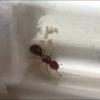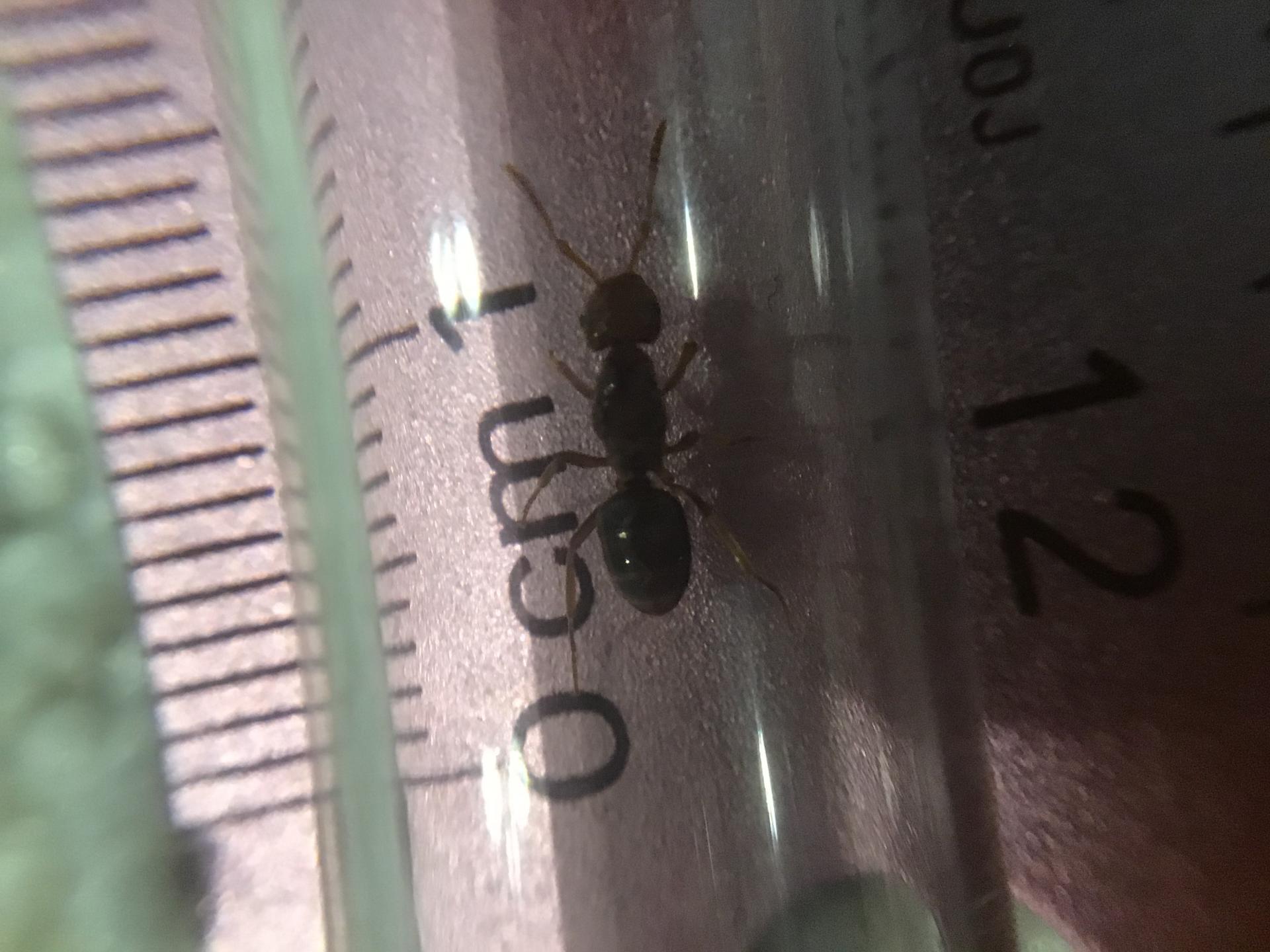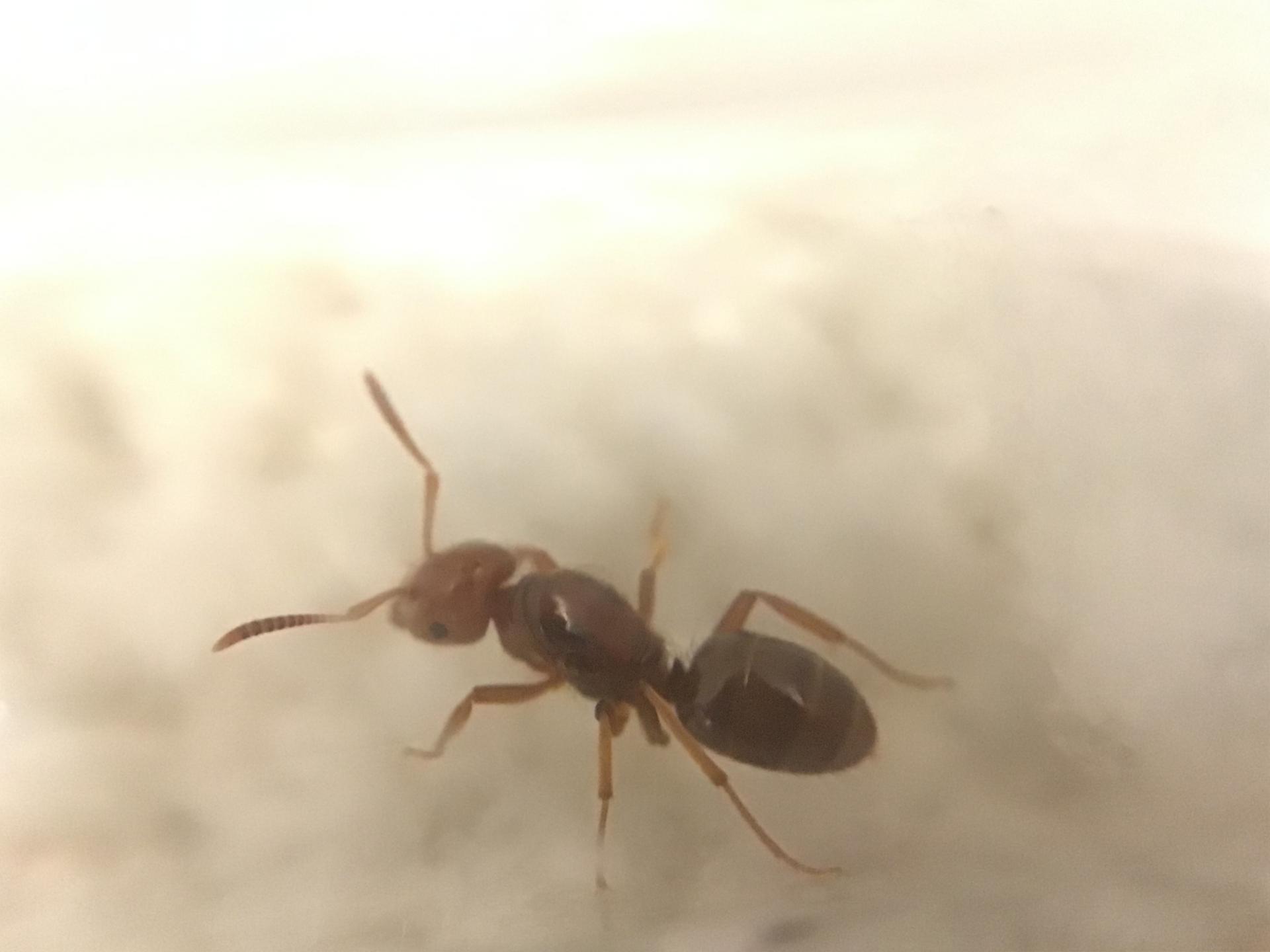- Formiculture.com
- Forums
- Gallery
- Members
- Member Map
- Chat

Queen ant ID?
Started By
AntBoi3030
, May 18 2021 5:51 PM
27 replies to this topic
#1
 Offline
-
Posted May 18 2021 - 5:51 PM
Offline
-
Posted May 18 2021 - 5:51 PM
She was caught in MD at a black light wingless and looks suspiciously like a l.claviger 
Check out my new YouTube Video!
#2
 Offline
-
Posted May 18 2021 - 6:32 PM
Offline
-
Posted May 18 2021 - 6:32 PM
Lasius (Acanthomyops), either L. claviger or L. interjectus
Also, this thread should be moved to Ant ID Requests
Edited by Mettcollsuss, May 18 2021 - 6:39 PM.
- ANTdrew likes this
#3
 Offline
-
Posted May 18 2021 - 6:39 PM
Offline
-
Posted May 18 2021 - 6:39 PM
Sad I don’t know how she got on a black light lol aren’t their nuptials In the fall
Check out my new YouTube Video!
#4
 Offline
-
Posted May 18 2021 - 6:40 PM
Offline
-
Posted May 18 2021 - 6:40 PM
They are, but I believe queens can hibernate solitarily and emerge to infiltrate a host colony in the spring
#5
 Offline
-
Posted May 18 2021 - 6:41 PM
Offline
-
Posted May 18 2021 - 6:41 PM
Probably interjectus considering she flew now. Interjectus fly in the spring. If you aren’t an experienced antkeeper (they are parasitic), i would just release her.
Edited by Manitobant, May 18 2021 - 6:42 PM.
- VoidElecent likes this
My journals:
Polyergus Mexicanus: https://www.formicul...gs/#entry175528
Lasius minutus: https://www.formicul...cs/#entry174811
Lasius latipes: https://www.formicul...gs/#entry206449
General acanthomyops journal: https://www.formicul...yops-with-eggs/
Polyergus Mexicanus: https://www.formicul...gs/#entry175528
Lasius minutus: https://www.formicul...cs/#entry174811
Lasius latipes: https://www.formicul...gs/#entry206449
General acanthomyops journal: https://www.formicul...yops-with-eggs/
#6
 Offline
-
Posted May 18 2021 - 6:50 PM
Offline
-
Posted May 18 2021 - 6:50 PM
well I already have a queen of this sp. i have multiple traps/bricks in the ground to get lasius cocoons and callows and will try to get her workers.
Edited by AntBoi3030, May 18 2021 - 6:53 PM.
Check out my new YouTube Video!
#7
 Offline
-
Posted May 18 2021 - 6:55 PM
Offline
-
Posted May 18 2021 - 6:55 PM
#8
 Offline
-
Posted May 18 2021 - 7:57 PM
Offline
-
Posted May 18 2021 - 7:57 PM
You can't. Ask a moderator, and report it.
Hi there! I went on a 6 month or so hiatus, in part due, and in part cause of the death of my colonies.
However, I went back to the Sierras, and restarted my collection, which is now as follows:
Aphaenogaster uinta, Camponotus vicinus, Camponotus modoc, Formica cf. aserva, Formica cf. micropthalma, Formica cf. manni, Formica subpolita, Formica cf. subaenescens, Lasius americanus, Manica invidia, Pogonomyrmex salinus, Pogonomyrmex sp. 1, Solenopsis validiuscula, & Solenopsis sp. 3 (new Sierra variant).
#9
 Offline
-
Posted May 19 2021 - 3:59 AM
Offline
-
Posted May 19 2021 - 3:59 AM
Looks more like Lasius (Cthonolasius) aphidicola to me, given the slightly more robust build, silky appearance, and grayish coloration. L. claviger is deep brown and strongly shining with a lighter gena and clypeus, which L. interjectus is uniformly orange and also strongly shining.
Currently Keeping:
Camponotus chromaiodes, Camponotus nearcticus, Stigmatomma pallipes, Strumigenys brevisetosa, Strumigenys clypeata, Strumigenys louisianae, Strumigenys membranifera, Strumigenys reflexa, Strumigenys rostrata
#10
 Offline
-
Posted May 19 2021 - 5:47 AM
Offline
-
Posted May 19 2021 - 5:47 AM
could he possibly get a better shot in better lighting conditions? I swear it looks kinda orangey.
Edited by Manitobant, May 19 2021 - 5:47 AM.
My journals:
Polyergus Mexicanus: https://www.formicul...gs/#entry175528
Lasius minutus: https://www.formicul...cs/#entry174811
Lasius latipes: https://www.formicul...gs/#entry206449
General acanthomyops journal: https://www.formicul...yops-with-eggs/
Polyergus Mexicanus: https://www.formicul...gs/#entry175528
Lasius minutus: https://www.formicul...cs/#entry174811
Lasius latipes: https://www.formicul...gs/#entry206449
General acanthomyops journal: https://www.formicul...yops-with-eggs/
#11
 Offline
-
Posted May 19 2021 - 5:51 AM
Offline
-
Posted May 19 2021 - 5:51 AM
could he possibly get a better shot in better lighting conditions? I swear it looks kinda orangey.
Not orangey enough for either.
Currently Keeping:
Camponotus chromaiodes, Camponotus nearcticus, Stigmatomma pallipes, Strumigenys brevisetosa, Strumigenys clypeata, Strumigenys louisianae, Strumigenys membranifera, Strumigenys reflexa, Strumigenys rostrata
#12
 Offline
-
Posted May 19 2021 - 5:54 AM
Offline
-
Posted May 19 2021 - 5:54 AM
The legs have more of a yellow tint to them. Its most likely lasius interjectus. This species had queens with wings walking around even in the snow in my backyard, I wouldn't be surprised if one was out with wings this late.
- VoidElecent and Manitobant like this
We don’t talk about that
#13
 Offline
-
Posted May 19 2021 - 8:05 AM
Offline
-
Posted May 19 2021 - 8:05 AM
A yellow tint does not mean anything. Below, I have a picture of a true L. interjectus queen with its striking orange coloration.

- DDD101DDD likes this
Currently Keeping:
Camponotus chromaiodes, Camponotus nearcticus, Stigmatomma pallipes, Strumigenys brevisetosa, Strumigenys clypeata, Strumigenys louisianae, Strumigenys membranifera, Strumigenys reflexa, Strumigenys rostrata
#14
 Offline
-
Posted May 19 2021 - 8:20 AM
Offline
-
Posted May 19 2021 - 8:20 AM
The aphidicola in my neighborhood have yellow tints on their legs. It doesn’t mean anything.The legs have more of a yellow tint to them. Its most likely lasius interjectus. This species had queens with wings walking around even in the snow in my backyard, I wouldn't be surprised if one was out with wings this late.
- Ferox_Formicae likes this
#15
 Offline
-
Posted May 19 2021 - 9:37 AM
Offline
-
Posted May 19 2021 - 9:37 AM
she is more dark orange ill take a better picture when i'm done with school.
Check out my new YouTube Video!
#16
 Offline
-
Posted May 19 2021 - 9:39 AM
Offline
-
Posted May 19 2021 - 9:39 AM
I have a very domant sp. of citronella sp it is l.umbartus i caught 6 queens they all have the same build but are black but they have the same leg structure
Check out my new YouTube Video!
#17
 Offline
-
Posted May 19 2021 - 9:47 AM
Offline
-
Posted May 19 2021 - 9:47 AM
Lasius umbratus doesn't occur in North America. What was thought to be L. umbratus in North America is actually a similar species called L. aphidicola.
#18
 Offline
-
Posted May 19 2021 - 9:48 AM
Offline
-
Posted May 19 2021 - 9:48 AM
I have a very domant sp. of citronella sp it is l.umbartus i caught 6 queens they all have the same build but are black but they have the same leg structure
Lasius umbratus does not exist in North America, and is a Eurasian species. You're talking about Lasius aphidicola, which was raised from synonymy with L. umbratus in 2018 by Schar et al.
Currently Keeping:
Camponotus chromaiodes, Camponotus nearcticus, Stigmatomma pallipes, Strumigenys brevisetosa, Strumigenys clypeata, Strumigenys louisianae, Strumigenys membranifera, Strumigenys reflexa, Strumigenys rostrata
#19
 Offline
-
Posted May 19 2021 - 9:56 AM
Offline
-
Posted May 19 2021 - 9:56 AM
#20
 Offline
-
Posted May 19 2021 - 12:35 PM
Offline
-
Posted May 19 2021 - 12:35 PM
Check out my new YouTube Video!
1 user(s) are reading this topic
0 members, 1 guests, 0 anonymous users




















